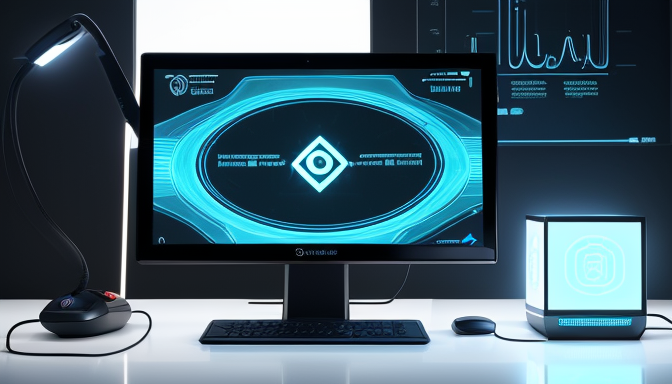Imagine a world where your thoughts can instantly control devices, where communication transcends spoken words, and where the limitations of physical disabilities are shattered. Welcome to the realm of brain-computer interfaces (BCIs), a revolutionary technology that is poised to redefine the boundaries of human capability. These interfaces serve as a bridge between our minds and machines, enabling direct interaction that was once confined to the realm of science fiction.
BCIs have the potential to transform not just individual lives but entire industries. From medical rehabilitation for patients with paralysis to immersive gaming experiences, the applications are as diverse as they are exciting. Imagine a paraplegic person controlling a robotic arm just by thinking about it, or gamers navigating virtual worlds with mere thoughts. The implications are profound and the excitement is palpable!
However, it’s not all sunshine and rainbows. As we dive into this brave new world, we must also confront the challenges that come with it. Technical limitations, user acceptance, and ethical dilemmas pose hurdles that need to be addressed. For instance, how do we ensure the privacy of thoughts? What happens if this technology falls into the wrong hands? These questions are not just theoretical; they are pressing issues that demand our attention.
Despite these challenges, the future of BCIs is bright. Innovations in neuroscience and engineering are paving the way for advancements that could make BCIs more accessible and reliable. As we continue to explore the possibilities, one thing is clear: brain-computer interfaces are not just a fleeting trend; they are the future of human interaction with technology.
The Technology Behind BCIs
Understanding the technology behind brain-computer interfaces (BCIs) is like peeling back the layers of a complex onion. At its core, BCI technology bridges the gap between human thoughts and digital devices, enabling direct communication without the need for physical interaction. This fascinating intersection of neuroscience and engineering allows us to explore uncharted territories of human capability.
BCIs operate by interpreting brain signals, which are generated through neural activity. These signals are then translated into commands that can control external devices. The process typically involves several key components:
- Signal Acquisition: This is the first step where electrodes, either implanted or non-invasive, capture electrical activity from the brain.
- Signal Processing: The raw data collected is noisy and complex, requiring sophisticated algorithms to filter and interpret the signals accurately.
- Device Output: Once processed, the interpreted signals are sent to a computer or robotic device, allowing the user to control it through thought alone.
Recent advancements in machine learning and artificial intelligence have significantly enhanced the accuracy of these systems. For instance, researchers are now able to train algorithms to recognize specific patterns associated with certain thoughts, making BCIs more responsive and user-friendly. Imagine playing a video game just by thinking about the actions—this is not science fiction, but rather a glimpse into the potential of BCIs!
However, the technology is still in its infancy, and various challenges remain. The need for better signal resolution, increased portability of devices, and improved user interfaces are all areas ripe for exploration. As we push the boundaries of what BCIs can achieve, the fusion of technology and human cognition promises to unlock new dimensions of interaction and creativity.

Applications of BCIs
Brain-computer interfaces (BCIs) are not just a futuristic dream; they are rapidly becoming a reality with transformative applications across various fields. Imagine a world where individuals with mobility impairments can control devices simply by thinking about them. This is not science fiction; it’s happening now! In the medical field, BCIs are revolutionizing rehabilitation by allowing patients to regain control over their movements after strokes or spinal injuries. By translating brain signals into actionable commands, BCIs help individuals navigate their environments and improve their quality of life.
But the applications of BCIs go beyond just healthcare. The gaming industry is experiencing a seismic shift as developers integrate BCIs to create immersive experiences. Gamers can now interact with their virtual worlds using their thoughts, making gameplay more engaging and intuitive. Imagine playing your favorite game without a controller—just by thinking about the actions you want to take!
Moreover, BCIs are paving the way for enhanced communication for those with speech impairments. These interfaces can interpret brain signals related to speech and convert them into text or synthesized voice, enabling users to express themselves more freely. The potential here is staggering; it’s as if we are giving a voice to those who have been silenced.
In a more futuristic sense, BCIs could even facilitate direct brain-to-brain communication, opening up new avenues for collaboration and understanding. However, while the possibilities are exciting, they also raise questions about privacy and consent that we must carefully consider.
In summary, the applications of BCIs are vast and varied, touching lives in ways we are just beginning to understand. As we continue to explore these technologies, it’s crucial to balance innovation with ethical considerations, ensuring that we harness the power of BCIs responsibly.
Challenges and Limitations
Brain-computer interfaces (BCIs) hold incredible promise, but they are not without their challenges and limitations. One of the most significant hurdles is the technical complexity of interpreting brain signals accurately. The brain is an intricate network of neurons firing in a chaotic symphony, and deciphering this music into actionable data is a monumental task. Researchers are continuously working on improving algorithms that can translate these signals, but achieving high accuracy remains a challenge.
Moreover, the user acceptance of BCIs is another critical factor in their adoption. Many potential users may feel apprehensive about the idea of interfacing their brains with technology. Concerns about safety, privacy, and the potential for misuse can create a barrier to acceptance. Imagine the skepticism someone might have if told they could control a computer just by thinking about it; it sounds like science fiction, right? This skepticism can slow down the integration of BCIs into everyday life.
Additionally, the cost of developing and implementing BCIs can be prohibitive. The technology required to create effective interfaces is expensive, and this cost can limit access to those who might benefit the most, such as individuals with disabilities. For instance, while a revolutionary BCI could help a paralyzed individual regain mobility, the financial burden of such technology can leave many stranded on the sidelines.
Another challenge lies in the regulatory landscape. As BCIs are still relatively new, there is a lack of established guidelines governing their use. This uncertainty can deter potential investors and developers from fully committing to BCI projects. To illustrate, think of the early days of the internet—without clear regulations, it was a wild west of innovation and uncertainty. Today, BCIs are at a similar crossroads, where clear guidelines could pave the way for safer and more effective applications.
In summary, while the potential of brain-computer interfaces is undeniably exciting, the path forward is laden with obstacles that require thoughtful consideration and innovative solutions. As we continue to explore this fascinating field, addressing these challenges will be key to unlocking the full potential of BCIs.

Ethical Considerations
As we venture deeper into the realm of brain-computer interfaces (BCIs), a myriad of arises, challenging our understanding of privacy, consent, and the very nature of humanity. Imagine a world where thoughts can be transmitted directly to a device—sounds incredible, right? But with great power comes great responsibility.
One of the most pressing issues is privacy. When our thoughts can be accessed by machines, who owns that information? Is it the individual, the company that developed the BCI, or perhaps even a third party? These questions lead us to ponder the implications of data security. Just like how we guard our personal data on social media, we must consider how to protect our innermost thoughts from potential breaches.
Moreover, the question of consent is paramount. How do we ensure that users fully understand what they are agreeing to when they interface their brains with technology? The line between voluntary participation and coercion can become blurred, especially in vulnerable populations such as those with disabilities or chronic illnesses seeking rehabilitation.
Additionally, there’s a potential for misuse of BCIs. Imagine a future where these technologies could be used for manipulation or control, turning them into tools of oppression rather than empowerment. This leads us to consider the moral implications of integrating such advanced technology with human cognition.
In conclusion, while the potential of BCIs is undeniably exciting, we must tread carefully. Addressing these ethical considerations is not just a matter of policy; it’s about preserving our humanity in an age of rapid technological advancement. The future of BCIs hinges not only on innovation but also on our commitment to ethical standards that protect individuals’ rights and dignity.
The Future of BCIs
The future of brain-computer interfaces (BCIs) is not just a vision; it’s a thrilling reality waiting to unfold. Imagine a world where your thoughts could control devices, where communication transcends language barriers, and where rehabilitation processes are not just effective but also engaging. The possibilities are limitless! As technology advances, BCIs are poised to revolutionize our daily lives in ways we can hardly fathom.
One of the most exciting prospects is the enhancement of human capabilities. BCIs could enable individuals to perform tasks with their minds alone, making it possible for people with disabilities to regain independence and interact with their environment seamlessly. This advancement could lead to a new era of augmented intelligence, where human cognitive processes are enhanced by technology, allowing us to think faster and solve complex problems more efficiently.
Moreover, the integration of BCIs with artificial intelligence (AI) could lead to groundbreaking developments. For instance, AI algorithms could analyze brain signals in real-time, providing personalized feedback and facilitating learning in unprecedented ways. This synergy could transform education, making it more tailored and effective for every learner.
However, with great power comes great responsibility. As we venture into this brave new world, we must navigate the ethical landscape carefully. Questions surrounding privacy, consent, and the potential for misuse must be addressed. It’s essential to establish guidelines that protect individuals while promoting innovation.
In conclusion, the future of BCIs is a tapestry woven with threads of innovation, ethical considerations, and human potential. As we stand on the brink of this new frontier, we must embrace the excitement while being mindful of the challenges that lie ahead. The journey is just beginning, and the impact of BCIs on society could be nothing short of revolutionary!
Frequently Asked Questions
- What exactly are brain-computer interfaces (BCIs)?
BCIs are innovative technologies that facilitate direct communication between the brain and external devices. Imagine being able to control a computer or a robotic arm just by thinking about it! This groundbreaking technology opens up new avenues for communication and interaction.
- How are BCIs used in medical applications?
In the medical field, BCIs are primarily used for rehabilitation, helping patients regain movement after strokes or injuries. They can also assist individuals with severe disabilities to communicate, giving them a voice when traditional methods fail.
- What challenges do BCIs face?
Despite their potential, BCIs encounter several hurdles, such as technical limitations and the need for user acceptance. It’s like trying to navigate a maze; there are twists and turns that need to be figured out before we can fully embrace this technology.
- Are there ethical concerns associated with BCIs?
Absolutely! With great power comes great responsibility. Ethical issues surrounding privacy, consent, and the potential misuse of BCIs are significant. It’s crucial to address these concerns to ensure that the technology is used safely and responsibly.
- What does the future hold for BCIs?
The future of BCIs is incredibly promising. As technology advances, we can expect to see even more innovative applications that could change the way we interact with the world. Think of it as the dawn of a new era in human-computer interaction!

